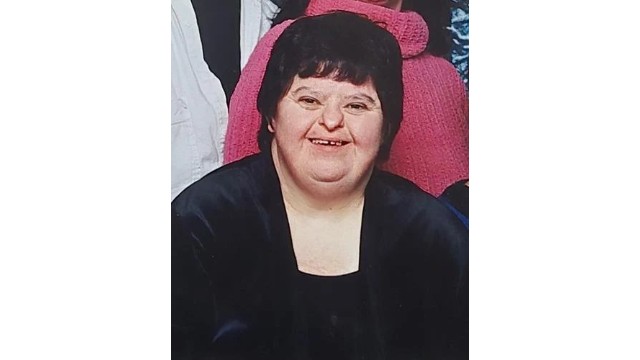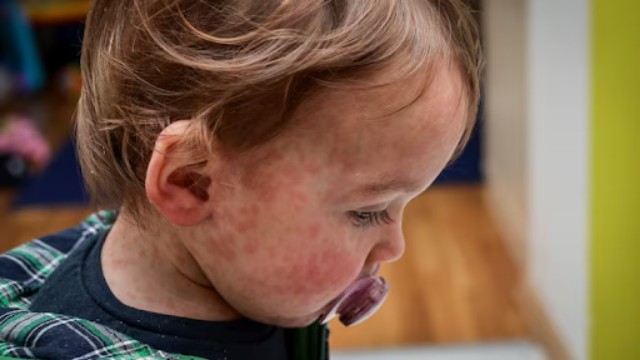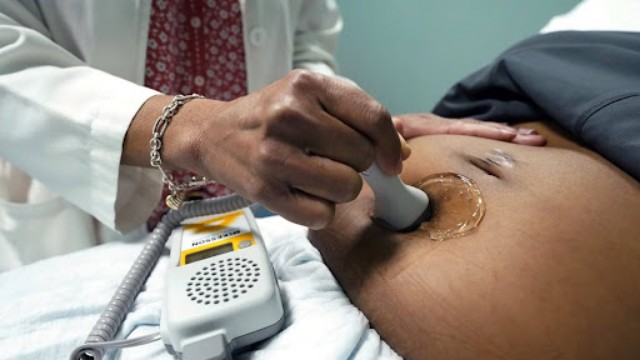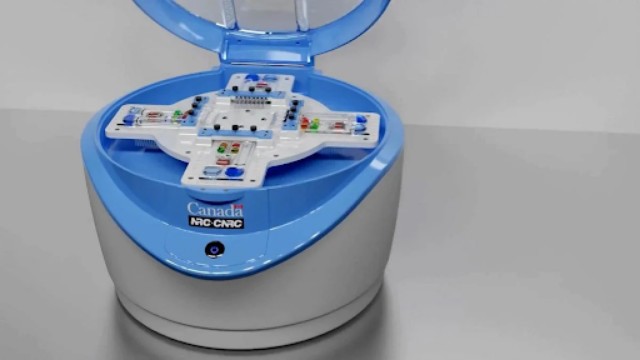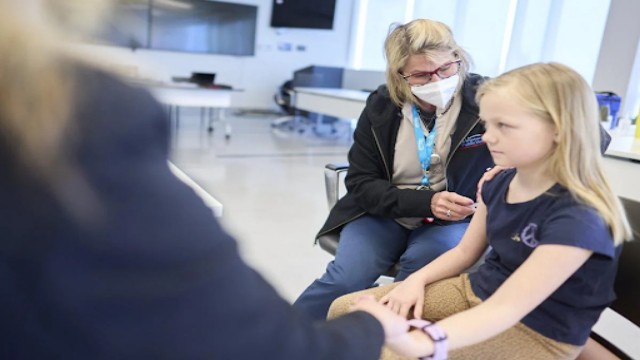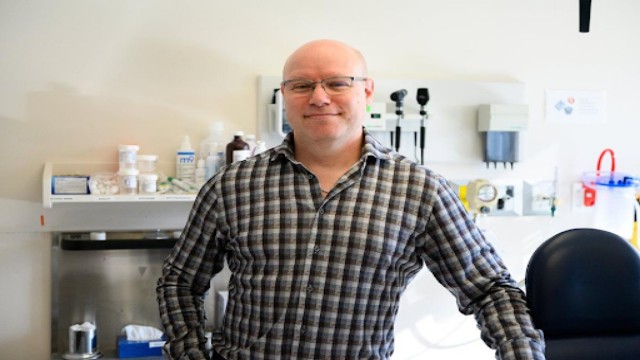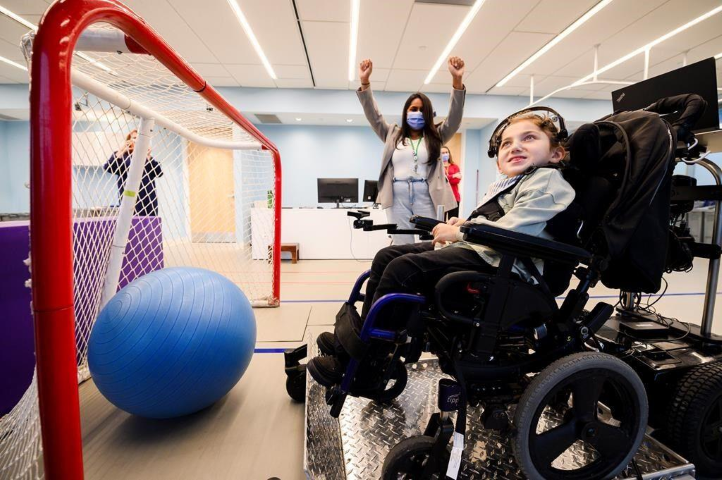
Brain-computer interface technology allows eight-year-old Giselle Alnaser to use her brain waves to move her wheelchair and play at the Holland Bloorview Kids Rehabilitation Hospital in Toronto, Tuesday, January 9, 2024. THE CANADIAN PRESS/Christopher Katsarov
8-year-old Giselle Alnaser aims to grab an Elmo stuffed toy across the room, steering her wheelchair platform with her brain waves. Diagnosed with a CAMK2b gene mutation as a toddler, Giselle faces challenges in muscle coordination and speech due to impaired brain-muscle communication.
Holland Bloorview Kids Rehabilitation Hospital runs the Brain Computer Interface (BCI) program, empowering children like Giselle to engage and play using their thoughts. Occupational therapist Susannah Van Damme explains that BCI enables children with limited movement or verbal communication to interact with their surroundings through mental commands.
The BCI system operates akin to an on-off switch, interpreting electrical brain patterns via EEG electrodes worn on a headset. Giselle, for instance, conjures a "go" thought to prompt movement in her wheelchair platform or activate a bubble maker, orchestrating activities with her mind.
For Giselle's parents, witnessing her navigate the world with BCI technology is profoundly rewarding. They cherish her newfound independence and the joy it brings her.
In Canada, a collaborative effort between Holland Bloorview, Alberta Children's Hospital, and Glenrose Rehabilitation Hospital spearheads BCI advancements for pediatric populations with disabilities. Dr. John Andersen of the University of Alberta emphasizes the importance of adapting BCI for non-verbal communication, a critical need voiced by parents.
BCI researchers envision a future where children like Giselle can articulate desires and necessities solely through their thoughts, transcending the limitations imposed by physical disabilities.
As BCI technology progresses, its potential to amplify children's voices and experiences remains a beacon of hope, promising a future where every child's expression finds its rightful place, regardless of physical constraints.


